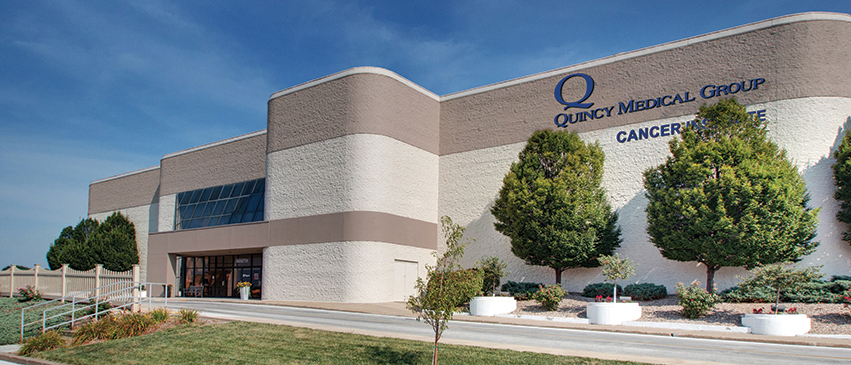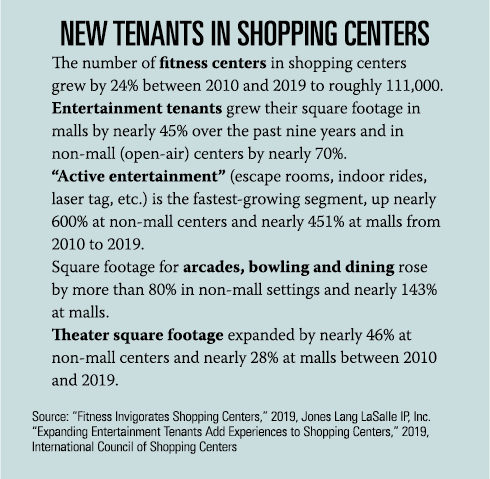Retail Is Changing With the Times

The most telltale sign of our changing retail environment—shopping centers and malls with empty storefronts—isn’t just one of doom and gloom. It also reflects the tremendous opportunities that exist for these vacant spaces. Our community is far from being the only one affected by what the industry has coined a “retail apocalypse.” Throughout the U.S. and abroad, retailers are becoming savvier about how they market their products to meet consumer demands, and developers are becoming more creative when it comes to filling these empty spaces.
While Amazon and online shopping account for a large part of the hit that brick-and-mortar retail has taken in recent years, it isn’t the only culprit. Retailers have been slow to adapt to the changing shopping environment and that, coupled with mounting debt, has resulted in dozens of bankruptcies and thousands of store closures over the past several years. According to Retail Dive, 2019 sent 17 major retailers into bankruptcy. Inside and outside of bankruptcy, retailers closed more than 9,000 stores last year. So, what about online shopping and how is it impacting retail sales?
Digital Commerce 360 reports that ecommerce now accounts for only 16 percent of total U.S. retail purchases, up from 5.6 percent in 2007. Consumers are driven by convenience, and online shopping provides just that. However, the vast majority of shoppers state that they still want to try on or touch merchandise before they make a purchase.
The Omnichannel Advantage
An omnichannel approach to marketing has been successful for many retailers, resulting in an increase in both online and in-store sales. Those who simultaneously integrate a strong social media, online and storefront presence are the ones coming out ahead. Target and Best Buy provide good examples, allowing shoppers to purchase online and pick up and return merchandise in-store, saving customers shipping costs and accelerating purchases and returns. Kohl’s began accepting and processing Amazon returns in 2019, attracting potential shoppers who are expected to help increase store sales. Starbucks, through its reward points system and ability to purchase through the app and pick up in-store, does an excellent job of providing a seamless user experience.

Even smaller, locally owned merchants are getting in on omnichannel marketing. For example, Peoria’s Blue Boutique promotes specific items through Instagram that are immediately available in-store and sends occasional texts to let customers know of in-store specials—all while having an online presence, too. Every store needs to be uniquely relevant to its brand and customers, and what works for one won’t necessarily work for another.
Anchor Spaces and Mall Medicine
The most notable empty spaces at shopping centers and malls are those once occupied by anchor tenants like JC Penney, Sears and Bergner’s. At the end of 2019, Green Street Advisors reported 800 vacant anchor spots at the 1,300 malls and outlet centers in the U.S. Using unconventional thinking to drive visitation for reasons other than shopping is key. With their vast multi-level square footage, anchor spaces are being backfilled by an array of nontraditional shopping mall uses including medical facilities, supermarkets, call centers, restaurants, churches, fitness centers, entertainment venues and more. Traditional shopping malls are becoming mixed-use developments—destinations where people can live, shop, work, dine and play.
Medical facilities are becoming more commonplace at U.S. shopping malls and centers. With convenient parking, shopping and dining for employees, patients and their families, these locations are attractive to healthcare providers. In addition, the increased daytime traffic creates a win for mall owners and the other tenants.
Quincy Mall in Quincy, Illinois, owned and managed by Cullinan Properties, recently welcomed Quincy Medical Group to the space formerly occupied by Bergner’s. The 75,000-square-foot facility contains oncology treatment services and an outpatient surgery center. Part of its appeal to decision makers was being able to repurpose a space that is integral to the economic success of the community.
Similar facilities are popping up in malls across the country, with UT Southwestern and Parkland Hospital taking over a 150,000-square-foot Sears space at a mall in Dallas, and Minneapolis’ Mall of America welcoming M Health Fairview, offering medical exams, laboratory testing, radiology and pharmacy. Medical providers are making it easier for patients by going to them, rather than waiting for patients to seek them out.
Enhancing The Experience
Entertainment concepts ranging from movie theaters, arcades and bowling, to active entertainment choices such as mini-golf and escape rooms are ramping up in popularity at shopping malls. According to CoStar, the amount of entertainment square footage in malls grew nearly 50 percent between 2010 and 2019. The developer of New Jersey’s American Dream Mall has chosen to allocate 55 percent of its tenancy to entertainment and dining and only 45 percent to retail.
“Consumers are spending more on out-of-home entertainment,” says Kathleen Brill, vice president and director of leasing for Cullinan Properties, Ltd. “The new entertainment concepts we’re seeing foster a lot of social interaction between business colleagues, families, adults and children. Entertainment-oriented tenants bring people to the mall for more than just shopping.”
The sky’s the limit when it comes to backfilling vacancies. Indoor sports arenas, theme parks, water parks, aquariums and ski hills are just a few of the exciting entertainment options popping up in American malls, adding to the overall experience. Retail shopping and malls aren’t dying out—they’re evolving! PM
Anaise Berry is director of marketing and communications with Cullinan Properties, Ltd.
- Log in to post comments

